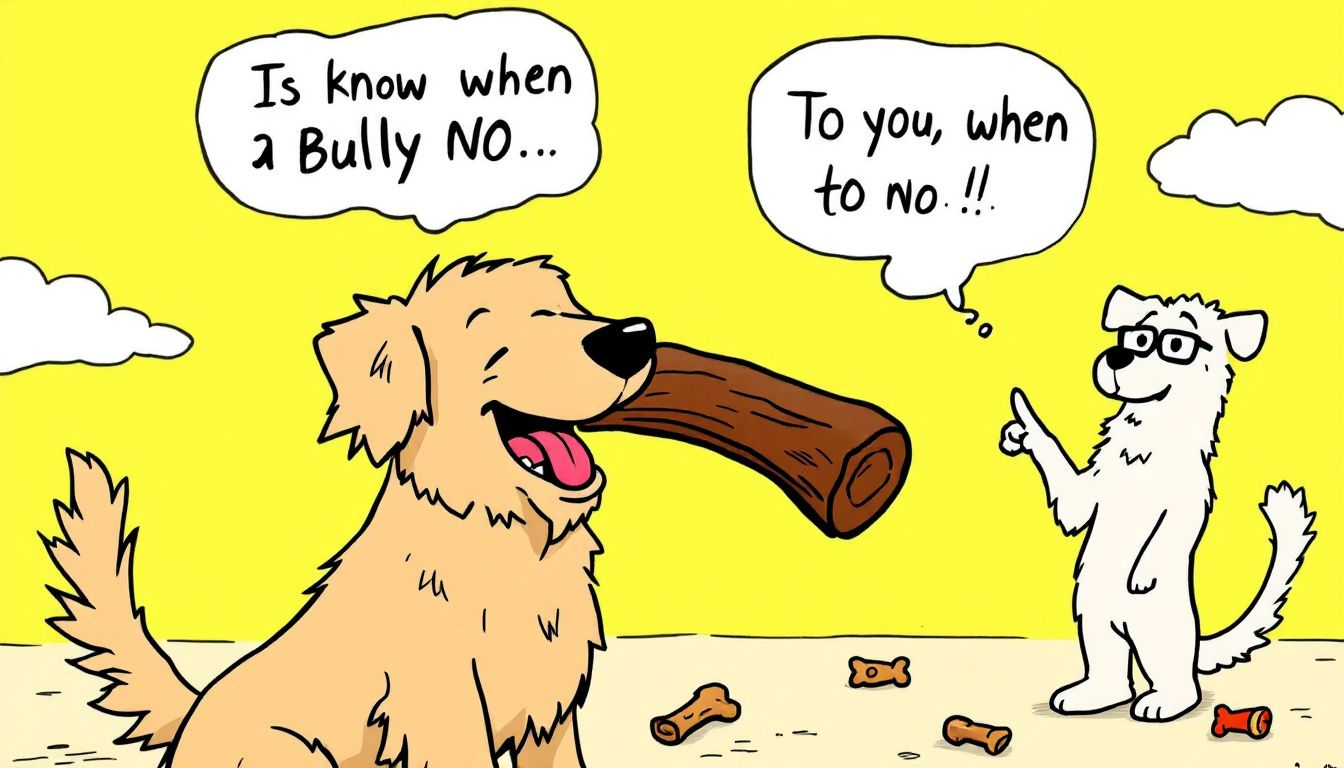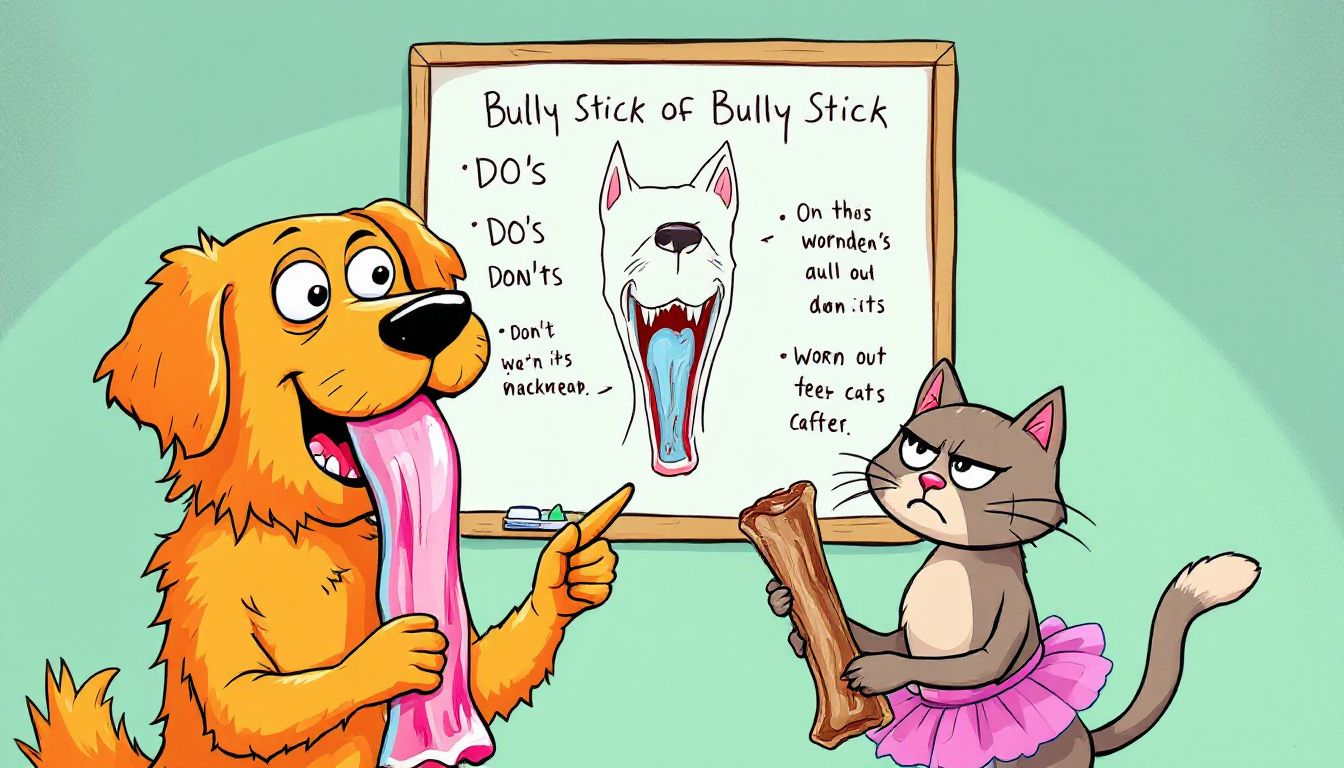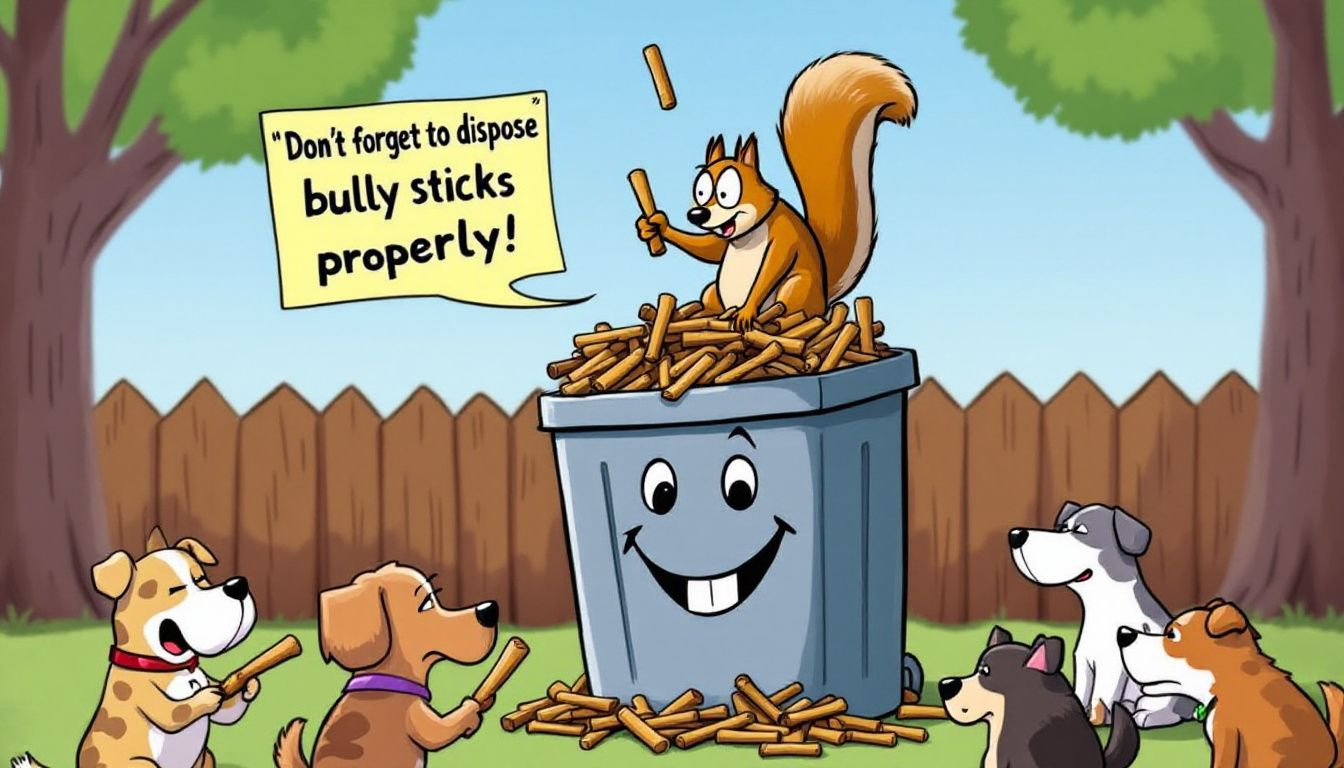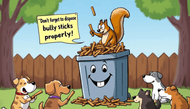When to Throw Away Bully Stick: Essential Guidelines for Dog Owners
Posted by Greg C. on Jan 03, 2025
When to Throw Away Bully Stick: Essential Tips for Dog Owners
Knowing when to throw away a bully stick is vital for your dog’s safety. To avoid choking hazards, discard it when it shrinks to about 2.5-3 inches. This guide will explain the signs to look out for and best practices for safe chewing, including when to throw away bully sticks.
Key Takeaways
- Discard bully sticks when they shrink to 2.5-3 inches to prevent choking hazards.
- Monitor your dog’s chew time to avoid swallowing large pieces and ensure safety.
- Use bully stick holders to keep the stick secure and reduce choking risks while chewing.
When to Throw Away Bully Stick: Essential Tips for Dog Owners

Knowing when to discard a bully stick is crucial for your dog’s safety. Typically, the stick should be thrown away when it shrinks to about 2.5-3 inches, making it easier to swallow whole and posing a choking hazard. Watch your dog while they chew to determine when the stick becomes too small.
Bully stick holders can significantly reduce choking risks by securing the stick and preventing your dog from swallowing the last portions. If you’re uncertain about a bully stick’s safety, replacing it with a new one is wise.
Introduction
Bully sticks are not just a treat but a fantastic tool for maintaining your dog’s health. These chews are made from beef muscle, specifically the pizzle of bulls, and are processed to remove moisture, ensuring they are safe and all-natural. One of the primary reasons dog owners love bully sticks is because they help keep their pets’ teeth clean by removing plaque and tartar. Additionally, they are highly digestible, making them a safe treat for almost any dog.
Choosing the right bully stick for your dog involves considering its size and chewing habits. A sturdier, longer stick can help prevent choking and ensure aggressive chewers get the most out of their chew. Puppies and senior dogs might benefit from softer or smaller sticks that are easier on their gums and teeth.
Adding bully sticks to your dog’s routine can help alleviate separation anxiety and boredom. Dogs enjoy chewing, and a high-quality treat like a bully stick can keep them occupied and happy. However, monitor their chew time to ensure they don’t consume the stick too quickly.
Identifying When a Bully Stick Becomes a Choking Hazard
It is essential to know when a bully stick becomes a choking hazard. Discard the stick when it shrinks to about 2.5-3 inches. It can then be easily swallowed whole, posing a significant risk of getting stuck in your dog’s throat.
Supervising your dog while they chews is crucial. This allows you to quickly identify when the stick is getting too small and needs to be taken bully stick away. Bully stick holders can further enhance safety by securing the stick and preventing your dog from swallowing it whole.
Power chewers require extra caution. They can quickly chew through bully sticks, increasing the choking risk if the stick is too small. Always choose a bully stick appropriate for your dog’s size and chewing strength to minimize risks.
Signs of Wear and Tear on Bully Sticks

Bully sticks are durable but show signs of wear and tear over time. Recognizing these signs helps ensure your dog remains safe. One clear indicator is if the bully stick becomes excessively soft or mushy. This texture change suggests that the stick is no longer safe for chewing and should be discarded.
Fraying or splitting at the ends of a bully stick is another sign that it’s time to throw it away. These changes can create small, sharp pieces that might harm your dog’s mouth or digestive tract. A change in color, such as a dull or faded appearance, can also suggest that the bully stick is no longer safe.
Additionally, an unusual odor emanating from the bully stick is a warning sign that it may need to be discarded. While bully sticks naturally have a distinct smell, any significant change in odor can indicate the presence of harmful toxins, bacterial contamination, or spoilage.
Monitoring Chew Time
Monitoring your dog’s chew time is vital for their safety and health. For dogs new to bully sticks, start with limited chewing sessions of five to ten minutes. This allows their digestive system to adjust and helps you observe their chewing habits. Gradually increase the chew time over the first week to ensure they’re comfortable and safe.
Supervision during chew time is crucial. Watching your dog ensures they chew safely and don’t swallow large pieces, which could cause digestive issues or choking hazards. A daily chew session of about 30 to 40 minutes for adult dogs is generally sufficient to keep them engaged and help maintain dental health.
Aggressive chewers may require additional supervision and shorter sessions to prevent them from quickly chewing through the stick. Ensure your dog has access to fresh water during and after their chew sessions to aid digestion.
Preventing Bacterial Contamination
Preventing bacterial contamination of bully sticks is crucial for your dog’s health. Label the container with the date when storing chewed bully sticks, as they can last up to two months if stored properly. Ensure the bully stick is thoroughly dried before storing it to minimize bacterial growth.
Choosing bully sticks from reputable sellers who follow proper processing methods can significantly reduce the risk of harmful bacteria. Wash your hands after handling bully sticks to prevent the spread of bacteria. It is crucial to dry partially chewed sticks thoroughly before storage to avoid bacterial contamination.
Using an easy-to-clean bully stick holder can also help minimize bacterial contamination. Regularly cleaning the holder and ensuring it’s dry before use will keep your dog’s chewing environment safe and hygienic.
Using Bully Stick Holders for Safety
 Bully stick holders are excellent tools for enhancing the safety of your dog’s chewing sessions. These holders secure the bully stick, preventing your dog from swallowing the last portions whole and reducing the risk of choking. By keeping the stick in place, these holders make it easier for dogs to grip and chew safely.
Bully stick holders are excellent tools for enhancing the safety of your dog’s chewing sessions. These holders secure the bully stick, preventing your dog from swallowing the last portions whole and reducing the risk of choking. By keeping the stick in place, these holders make it easier for dogs to grip and chew safely.
Some bully stick holders come with features like rounded edges and raised sides to ensure additional safety during chewing. For power chewers, choosing a durable holder extends the life of the chew and provides a safe chewing experience.
When purchasing bully sticks, consider getting a holder that fits the size and strength of your dog’s chewing habits. This small investment can significantly enhance the safety and enjoyment of your dog’s sessions with bully sticks.
How to Dispose of Used Bully Sticks

Properly disposing of used bully sticks is crucial to avoid health risks. When a bully stick shrinks to about 2.5-3 inches, discard it to prevent your dog from swallowing it whole. Throw used bully sticks in the regular trash to avoid contamination and potential health risks.
Ensure the used bully stick is securely wrapped before disposal to prevent the spread of bacteria. Proper disposal practices are the first step in keeping your dog’s environment clean and safe.
Signs Your Dog May Have Swallowed a Large Chunk
Recognizing the signs that your dog may have swallowed a large chunk of bully stick is vital for their health. Swallowing a large piece can lead to choking or gastrointestinal blockage, which are serious health emergencies. Watch for signs of gastrointestinal emergency or choking, such as difficulty breathing, excessive drooling, or vomiting.
If you suspect your dog has swallowed a large chunk or large chunks, take it to the vet or call for professional advice immediately. Depending on the severity of the blockage in your dog's stomach, possible treatments can include IV fluids, overnight monitoring, or emergency surgery. An upset stomach may also result.
Constantly monitor your dog during chew toy time to ensure they don’t swallow large pieces and prevent these emergencies. Vigilance helps keep your furry friend safe and healthy with their dog chews, as dogs love your dog’s mouth and can be a source of concern while your dog enjoys their playtime.
Summary
In summary, bully sticks are a fantastic dog treat with numerous health benefits. However, monitoring your dog’s chew time is crucial, as well as recognizing signs of wear and tear and knowing when to discard the stick. Using bully stick holders can enhance safety, and preventing bacterial contamination is essential for your dog’s health.
By following these tips, you can ensure that your dog enjoys their bully sticks safely and healthily. Always err on the side of caution and keep an eye on your dog during their chew sessions to provide the best care possible.
Frequently Asked Questions
How long should I let my dog chew on a bully stick?
If your dog is an adult, let it chew on a bully stick for about 30 to 40 minutes. If it is new to chewing on a bully stick, start with 5 to 10 minutes and gradually increase the time.
How do I know when a bully stick is too small and needs to be thrown away?
Once your bully stick gets down to around 2.5-3 inches, it’s time to toss it to avoid any choking risks. Better safe than sorry!
Can bully sticks cause bacterial contamination?
If bully sticks are not stored properly, they can become contaminated with bacteria. To stay safe, dry them well and wash your hands after handling them.
What are bully stick holders, and are they necessary?
Bully stick holders keep the chew in place so your dog doesn't swallow it whole and choke. They’re recommended for safety!
What should I do if my dog swallows a large chunk of bully stick?
If your dog swallows a large chunk of a bully stick, don’t wait—get to the vet right away or call for expert help. It's important to avoid choking or blockage.



